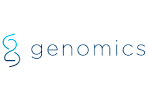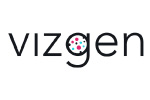Originally found in bacteria, plasmids are circular DNA fragments that can self-replicate in the cytoplasm. Within prokaryotic cells, these extrachromosomal DNA molecules typically contain genes that promote survival and virulence. The potential of plasmids to drive discovery became apparent when technologies such as restriction enzymes and PCR allowed scientists to cut and paste a DNA fragment into a plasmid to test the fragment’s function. Since then, plasmids have become indispensable tools in basic and clinical research and have helped researchers determine gene function, generate transgenic animals, and produce therapeutic proteins and vaccines.1 While scientists have developed elegant technologies to modify plasmids more efficiently, plasmid purification remains a laborious, time-intensive part of the cloning process.
The Need to Increase Plasmid Isolation Throughput
Technological advances have allowed scientists to increase their experiments’ throughput and accelerate discovery rates. For example, researchers now perform genome-wide CRISPR screens in vitro and in vivo to scale up gene function analysis. To execute a screen, a scientist generates a large plasmid library, where each plasmid contains a short guide RNA that targets a different gene, combines it with a source of the DNA-cleaving enzyme Cas9, and administers both to their model organism of choice. Scientists also adopted plasmid technologies to accelerate pharmaceutical research. Gene therapy, mRNA therapy, and vaccines all rely on plasmids during the development and production phases. Newer technologies aimed at non-viral delivery of gene therapies and vaccines will likely further increase the demand for plasmid DNA. In addition, researchers perform high-throughput drug discovery screens with recombinant proteins that they produce from large plasmid libraries. Because such plasmid libraries are composed of tens of thousands of unique DNA sequences, experimental success depends on automating plasmid production.
Challenges with Scaling up Plasmid DNA Extraction
Isolating plasmid DNA from bacterial lysates is a messy process. The manual purification protocol that scientists developed when plasmids were first discovered remains one of the most effective methods to isolate large quantities of highly pure plasmid DNA. In this procedure, scientists lyse bacteria, precipitate DNA, wash the precipitate, and re-suspend it in water or buffer. For downstream applications that require highly pure DNA, such as transformations and transfections, researchers repeat the precipitation process. Therefore, plasmid purification typically involves repeated manual aspiration and dispersion steps that slow down the process and introduce
Specialized plasmid purification columns bind DNA and facilitate purification. However, such columns still require scientists to go through multiple pipetting and centrifugation rounds. Pipetting by hand is impractical for large-scale projects because it is labor-intensive and prone to error and contamination. In addition, small differences in pipetting techniques among scientists cause inter-user variability that affects the final product’s yield and purity. Finally, most pipettes do not have an ergonomic design and physically strain the user, which further increases error rates when executing protocols that contain repeated pipetting steps.
Automated plasmid DNA purification circumvents the problems related to pipetting speed and accuracy and accelerates plasmid preparation, enabling scientists to reliably scale up their experiments. So far, scientists have struggled to develop automated plasmid purification methods that produce the yield and purity required for high-throughput downstream applications.2 As such, high-throughput plasmid purification is a bottleneck that prevents scientists from scaling up their research.
Automating the Purification Process
Liquid handling systems such as the CyBio® FeliX alleviate the need for manual pipetting and greatly speed up a protocol’s processing time while reducing variability.3 CyBio FeliX is a fully automated system that frees scientists from manual pipetting and accelerates repetitive experiments. Scientists can program this liquid handler to aspirate and disperse fluids into an individual well, into rows or columns, or into an entire 96- or 384-well microplate.3 In addition, this compact instrument fits on standard laboratory benches and comes with an integrated mechanism to exchange tips of various sizes.
Scientists at SynbioCITE and Analytik Jena developed an automated plasmid purification method that integrates the CyBio FeliX pipetting platform to yield highly pure plasmid DNA at quantities that are well-suited for high-throughput downstream applications.2 The scientists designed this protocol for commercially-available silica filter-plate plasmid extraction kits to ensure that the final product is free of bacterial genomic DNA. After cell lysis and removal of cellular debris, the instrument applies the sample to a silica membrane that binds plasmid DNA, and subsequently washes the membrane prior to eluting purified plasmid DNA. When scientists combine the CyBio FeliX with a robotic arm and a benchtop centrifuge, they can completely automate plasmid purification.
Indeed, in a test of this protocol, a research team returned to their instrument an hour and a half after starting the process to find 96 highly pure plasmid preps that contained sufficient DNA for downstream applications, such as sequencing and bacterial transformation.2 Therefore, integrating CyBio FeliX into the plasmid production process saves scientists time and allows them to scale experiments with high quality plasmid DNA.











